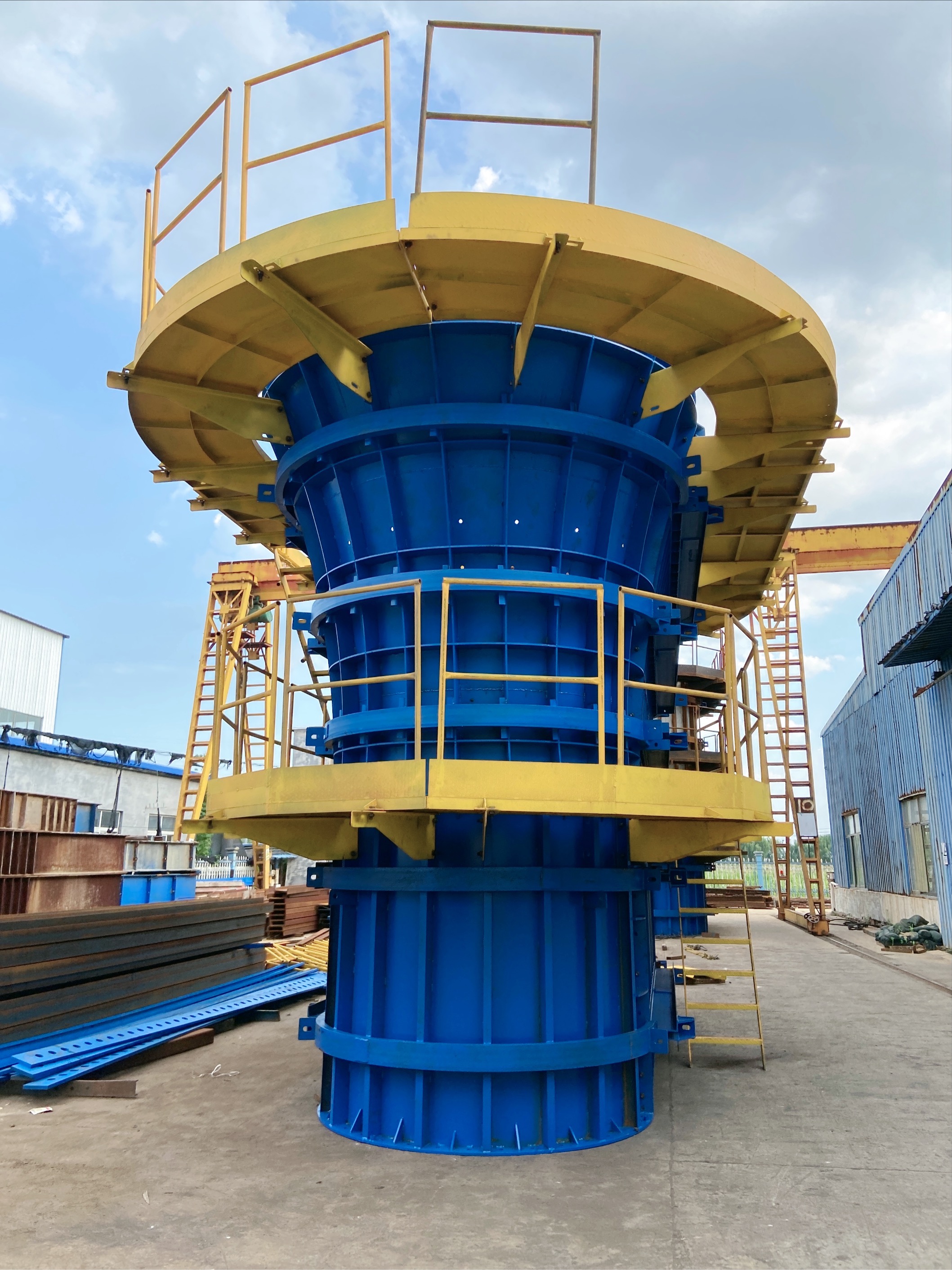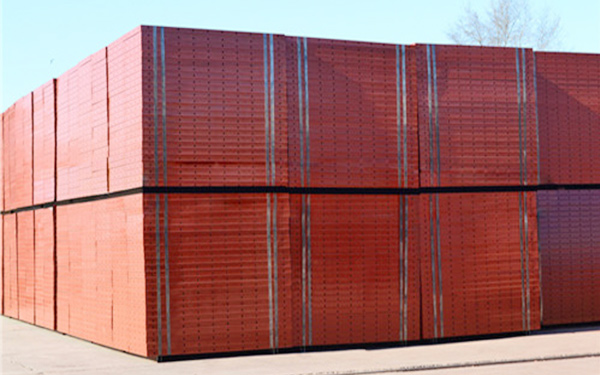Current position:
Home
News home
Industry News
Composite bridge steel formwork processing manufacturer: How to check the dimensional accuracy after steel formwork correction?
Composite bridge steel formwork processing manufacturer: How to check the dimensional accuracy after steel formwork correction?
source:Shandong Tianhong Heavy Industry Co., Ltd
Abstract:
The dimensional accuracy inspection of steel formwork after correction needs to adopt multidimensional detection methods, combined with standard specifications and advanced technical means, to form a complete quality verification system:
1、 Testing tools and methods
Testing project applicable tools and technical precision control standards
Three dimensional coordinate analysis method for laser tracker with plane position deviation
Total station grid coordinate comparison method ± 3mm/10m (GB50205 standard)
Ultrasonic thickness gauge for cross-sectional dimensions (5MHz high-frequency probe)
Caliper three-point measurement method (tolerance ± 0.5mm), thickness tolerance ± 1mm, profile height tolerance ± 2mm
Weld flatness and straightness tester (resolution 0.02mm)
Magnetic plug gauge (range 0.02-3.0mm) with weld seam height ≤ 3mm and misalignment ≤ 1mm
Angle deviation digital angle gauge (resolution 0.1 °)
3D scanning reverse modeling comparison method bending angle tolerance ± 0.5 ° (± 0.3 ° for special parts)
2、 Staged inspection process
Initial examination after correction
Using laser scanning to obtain three-dimensional point cloud data and conducting deviation analysis with the design model (allowing local deviation ≤ L/500)
Grid measurement of the correction area using a micrometer (measuring point spacing ≤ 300mm)
Preloading retest
After applying 110% of the design load for 24 hours, the deformation of key nodes is retested to be ≤ 2mm
Key monitoring of residual deformation rate in the heat affected zone (HAZ) of welds ≤ 0.15%
Final inspection before assembly
Attempt to assemble adjacent templates, with a joint gap of ≤ 1.5mm and no misalignment
Check the concentricity of bolt holes (through-hole rate ≥ 95%, misalignment ≤ 1mm)
3、 Examples of professional equipment applications
3D scanning system
Using a blue light scanner (accuracy 0.02mm/m ²), generate deviation chromatograms (red>3mm, yellow 1-3mm, green<1mm)
Verify the curvature radius of the curved formwork of the bridge (with a tolerance of R ± 2mm)
Numerical Control Testing Platform
Set up automatic measurement path and conduct dense sampling of 500 points/㎡ on the box girder template
Real time data transmission to MES system, generating SPC process control charts
4、 Qualification criteria
Measures for handling the allowable range of defect types
Local pit depth ≤ 0.5mm, area ≤ 20cm ², polished after epoxy resin repair
Wave deformation wavelength/amplitude ratio ≥ 40:1, local pressure correction+flame leveling
Verticality deviation ≤ 2mm/m, cumulative ≤ 5mm secondary adjustment of support system
Deviation of bolt hole position, concentricity error>1.5mm. Re drill after drilling or welding repair
Through the above detection system, it can be ensured that the dimensional accuracy of the corrected steel formwork meets the requirements of GB50205-2025 standard, and the qualification rate for repeated use is increased to over 98%.
Testing project applicable tools and technical precision control standards
Three dimensional coordinate analysis method for laser tracker with plane position deviation
Total station grid coordinate comparison method ± 3mm/10m (GB50205 standard)
Ultrasonic thickness gauge for cross-sectional dimensions (5MHz high-frequency probe)
Caliper three-point measurement method (tolerance ± 0.5mm), thickness tolerance ± 1mm, profile height tolerance ± 2mm
Weld flatness and straightness tester (resolution 0.02mm)
Magnetic plug gauge (range 0.02-3.0mm) with weld seam height ≤ 3mm and misalignment ≤ 1mm
Angle deviation digital angle gauge (resolution 0.1 °)
3D scanning reverse modeling comparison method bending angle tolerance ± 0.5 ° (± 0.3 ° for special parts)
2、 Staged inspection process
Initial examination after correction
Using laser scanning to obtain three-dimensional point cloud data and conducting deviation analysis with the design model (allowing local deviation ≤ L/500)
Grid measurement of the correction area using a micrometer (measuring point spacing ≤ 300mm)
Preloading retest
After applying 110% of the design load for 24 hours, the deformation of key nodes is retested to be ≤ 2mm
Key monitoring of residual deformation rate in the heat affected zone (HAZ) of welds ≤ 0.15%
Final inspection before assembly
Attempt to assemble adjacent templates, with a joint gap of ≤ 1.5mm and no misalignment
Check the concentricity of bolt holes (through-hole rate ≥ 95%, misalignment ≤ 1mm)
3、 Examples of professional equipment applications
3D scanning system
Using a blue light scanner (accuracy 0.02mm/m ²), generate deviation chromatograms (red>3mm, yellow 1-3mm, green<1mm)
Verify the curvature radius of the curved formwork of the bridge (with a tolerance of R ± 2mm)
Numerical Control Testing Platform
Set up automatic measurement path and conduct dense sampling of 500 points/㎡ on the box girder template
Real time data transmission to MES system, generating SPC process control charts
4、 Qualification criteria
Measures for handling the allowable range of defect types
Local pit depth ≤ 0.5mm, area ≤ 20cm ², polished after epoxy resin repair
Wave deformation wavelength/amplitude ratio ≥ 40:1, local pressure correction+flame leveling
Verticality deviation ≤ 2mm/m, cumulative ≤ 5mm secondary adjustment of support system
Deviation of bolt hole position, concentricity error>1.5mm. Re drill after drilling or welding repair
Through the above detection system, it can be ensured that the dimensional accuracy of the corrected steel formwork meets the requirements of GB50205-2025 standard, and the qualification rate for repeated use is increased to over 98%.
Disclaimer: The content provided on this website is for reference only (some information is sourced from the internet). The publication of content information is for the purpose of transmission and does not represent the views of this website. If the content involves copyright issues, please contact the website editor in a timely manner, and we will take appropriate measures to avoid unnecessary losses for both parties.
Related article
- Renting steel formwork: What is the price of steel formwork?
- Bridge steel formwork processing: How to control the deformation of steel formwork?
- Customized processing of bridge steel formwork: how to prevent and deal with unstable formwork support?
- Steel formwork manufacturer supply specifications: What are the applicable fields for steel formwork
- Template manufacturer: What are the specific risks of grout leakage to construction safety?
- Customized rental of steel formwork: What are the dimensions, specifications, and models of steel formwork?
- Pulling out Mountains and Rivers for Win Win - Jining Tianli Employees Celebrate National Day Holiday with Tug of War Competition
- Pulling out Mountains and Rivers for Win Win - Jining Tianli Employees Celebrate National Day Holiday with Tug of War Competition
- Customized steel formwork manufacturers: How to avoid leakage of grout at the joints of the formwork?
- Steel template manufacturers supply for rent: How to deal with steel template size accuracy that is not up to standard? 双语对照 笔记
- Renting steel formwork manufacturers: How much does the material of steel formwork affect the price?
- Supplier of steel formwork rental station: How to deal with and prevent leakage of slurry in steel formwork?
Hot article

- T梁模版
- Pulling out Mountains and Rivers for Win Win - Jining Tianli Employees Celebrate National Day Holiday with Tug of War Competition
- 力“拔”山兮,“河”作共赢——济宁天力员工欢度国庆假期之拔河比赛
- Pulling out Mountains and Rivers for Win Win - Jining Tianli Employees Celebrate National Day Holiday with Tug of War Competition
- Pulling out Mountains and Rivers for Win Win - Jining Tianli Employees Celebrate National Day Holiday with Tug of War Competition
- Pulling out Mountains and Rivers for Win Win - Jining Tianli Employees Celebrate National Day Holiday with Tug of War Competition
- Pulling out Mountains and Rivers for Win Win - Jining Tianli Employees Celebrate National Day Holiday with Tug of War Competition
Recommended article

Customized rental of construction steel formwork: How to prevent and deal with loose joints in steel formwork?

Customized rental of steel formwork: What are the dimensions, specifications, and models of steel formwork?
- Customized rental of construction steel formwork: How to prevent and deal with loose joints in steel formwork?
- Customized rental of steel formwork: What are the dimensions, specifications, and models of steel formwork?
- Steel formwork manufacturer supply specifications: What are the applicable fields for steel formwork
- 力“拔”山兮,“河”作共赢——济宁天力员工欢度国庆假期之拔河比赛
- Pulling out Mountains and Rivers for Win Win - Jining Tianli Employees Celebrate National Day Holiday with Tug of War Competition
- Pulling out Mountains and Rivers for Win Win - Jining Tianli Employees Celebrate National Day Holiday with Tug of War Competition
- Pulling out Mountains and Rivers for Win Win - Jining Tianli Employees Celebrate National Day Holiday with Tug of War Competition
- Pulling out Mountains and Rivers for Win Win - Jining Tianli Employees Celebrate National Day Holiday with Tug of War Competition



